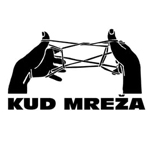Eriz Moreno is a sculptor, photographer, video artist from Bilbao, Spain.
The name and inspiration of the project come from the “Brotherhood and Unity” Bratstvo / Jedinstvo Highway, a highway constructed in the Federal Republic of Yugoslavia that connects its six former constituent regions, stretching over 1180 kilometres, whose name references to the Yugoslav national motto. The highway starts at the Austrian border and goes through Ljubljana, Zagreb, Belgrade and Skopje to the Greek border in the southeast. It was the first and only modern road compliant with international standards in Yugoslavia.
In the 1960s and 1970s, the road became a very busy and dangerous route for the Turkish, Greek and Yugoslav immigrants working in West Germany and Austria (“Gastarbeiter” in German, meaning “guest workers”) who, together with many other tourists from western countries, used this road on their summer holidays. Entering the communist but not aligned Yugoslavia was much easier for people from the NATO countries, including Germany, Turkey and Greece, than entering any of the communist Warsaw Pact countries from the Balkan region, which could have provided alternative routes.
The Bratstvo / Jedinstvo project has an interdisciplinary approach to the region as a major objective. To achieve an overview of what was (and still is) Yugoslavia, the project combines different forms of perception. The complexity of the region through which the highway passes incorporates historical, architectural, political and cultural aspects. This is why a comprehensive approach to this reality can only be achieved by setting a vision as wide as possible.
The project is as follows:
Between February and March 2015 a road-trip was taken by the author through all the regions that were part of the former Yugoslavia. The trip was aimed to document the idea of
Yugoslavia (through photography, video, audio …) by travelling on the highway physically and through Yugoslav history. To complete this personal view, different materials (books, videos, pins, coins …) related to Yugoslavia were collected along the way, with the goal of crossing different layers of history of the country that although does no longer exist it is still present in the collective imaginary of the region.
Finally, the project was finished in the end of 2015 at Asylum art residency, thanks to a final research and collection process.
